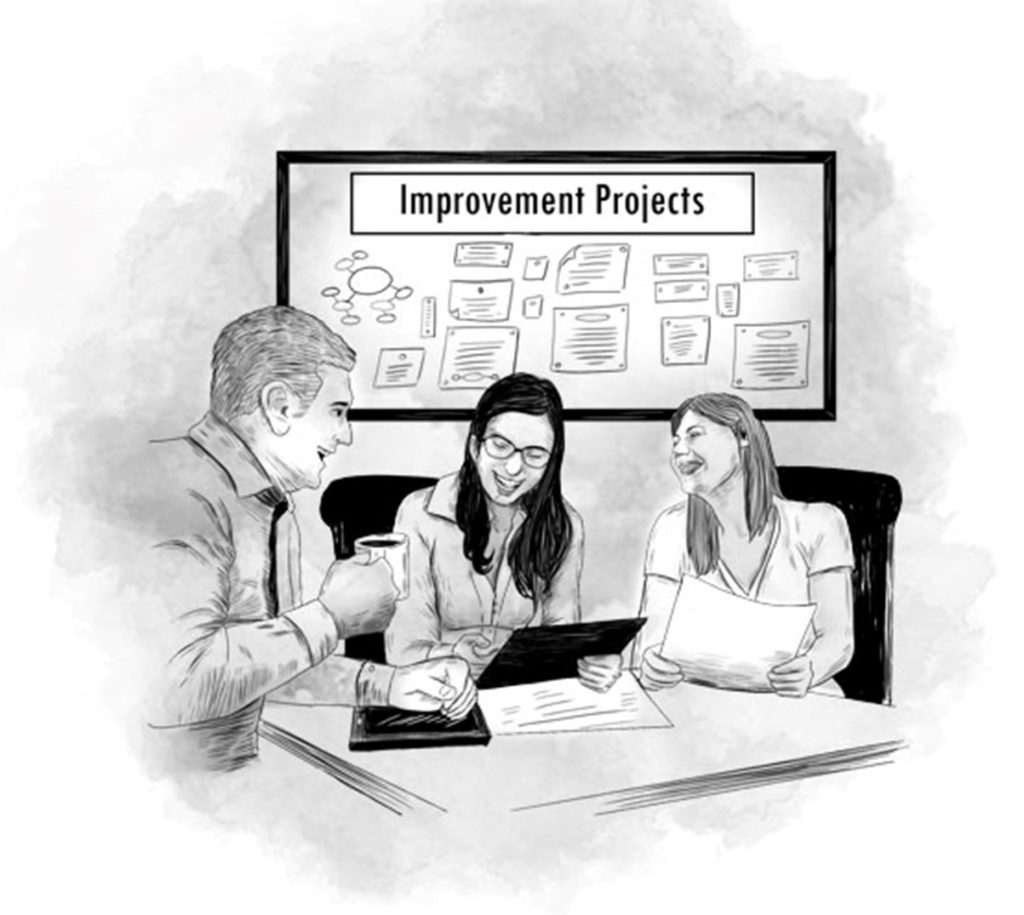A few years ago, a staff member at an I office visited confided in me and told me the following story:
“Our office was really slowing down last year. So, the doctor decided to take everyone out of town to a weekend practice management seminar. The speakers discussed really cool methods for doing our work. It was fun and we learned a lot. Plus, we also went over some great marketing ideas. We were all pretty excited when we returned to work after the weekend.
“On Monday, we agreed to get together at lunch to discuss how to implement what we learned. Some staff members were still dealing with patients, so our lunch meeting started 30 minutes late. Once we finally got together in the break room and started eating, we began a good meeting. We were interrupted with a few phone calls, and some patients started arriving early for their afternoon appointments. We had to cut the meeting short and didn’t get to discuss much of topics of the seminar, but we agreed to continue the meeting the following week.
“As it turned out, something always came up each week and… we never did meet again about the seminar.
“But we were still pretty pumped from the seminar and we had one of our best months ever. It was my job to clean the break room and, after a few months, I noticed that the binders of information we received at the seminar were still on the break room table, never opened. I stored them away for future reference.
“Now it is almost a year later, and everything is pretty much back to the way it was before we went to the seminar. The numbers are back down, some of us are a little burned out, and I don’t think we ever did implement anything from that seminar.”
—
Sound familiar?
I bet it does. I have seen it play out almost the same way countless times.
We are in the improvement business. We help people improve their health. We should be able to do the same for our business and for each other. In fact, if you are not constantly improving, your patients will seek practices that are.
In this new decade, apart from the many new events and changing tides of culture, technology, and mega-corporate influence, your future success is up to you. And it will be primarily based on the quality of your service and your outcomes – the experience your customers receive.
A report from a survey by Microsoft underlines this:
“As customer expectations continue to climb, it becomes more challenging for brands to set themselves apart from the competition. Markets are increasingly crowded, and both price and product are being steadily overtaken by customer experience as the number one brand differentiator” (Microsoft 2018, State of Global Customer Service Report).
More than any other short-term marketing tactics you may be using, only the best offices will thrive in the long run. And those will be the offices that are working on consistent improvement. Mediocrity could get you by in the past. But now, the future belongs only to the best.
But I have noticed that most offices just do not spend enough time consistently on improving their performance. After studying this for some time, I have observed a number of obvious and even hidden barriers that prevent us from working on improvement. I will explain what these are in a later article, but the following steps can help you ensure that you work ON your business to improve it, not just work IN it.
Your Improvement Clinic – Your Goals Lab
- Time spent on improvement doesn’t cost. It pays! Some business owners are concerned that time spent on improving the business or staff is too costly. It can be if the training or planning is poorly done. But remember that:
a. Better team efficiency generates better revenue.
b. Better trained and focused team members generate better revenue.
c. Better outcomes generate better revenue. - Head Coach. As the owner and CEO, you are also the Head Coach. How your team does – the business – is in large part based upon your coaching.
- Give it a name. In my new book, The Goal Driven Business (to be launched on July 4th of this year), I use the term Goals Lab as it is a location where you can go to work on getting to your goals faster. It could be your breakroom, a restaurant, a park, the reception area – anywhere really. You can call it your Practice Field, Improvement Dojo, or Mystic Garden! Just consider it a place and time that is separate from your time with patients.
- What gets done.
a. Team meetings for communication, review, coordination, and planning.
b. Team training and practice.
c. One-on-one training and practice.
d. Personal training, study, meditation. - Schedule these routinely – weekly, monthly, quarterly, and as needed.
- No interruptions, no calls, 100% attention present.
- Be challenging. You don’t get better unless you question what you have been doing to see how it could be better.
- Go over this with your team. Let them know that they, too, are coaches. And players as well. So, improvement is a team activity, one that requires responsibility and professional discipline.
Your car mechanic can’t work on your car when you are driving it down the freeway. You can’t see patients while they are driving their forklift at work or cooking dinner for their kids at home. You need a separate time and place dedicated to work on improvement.
Your goal is to create an expert office that generates expert results and gives your patients the best experience they can receive from any other comparable health care business.
Imagine your business being so good that patients not only drive in from across town, or even across the state, but fly in from all across the country to receive your services. Imagine that there is such a demand for your care that you even build a motel next to your facility to accommodate the out-of-towners.
Well, there was a Doctor of Chiropractic who was just that good. His name was Clarence Gonstead. His advice?
“Practice. Practice. Practice. Never stop.”
Ed


